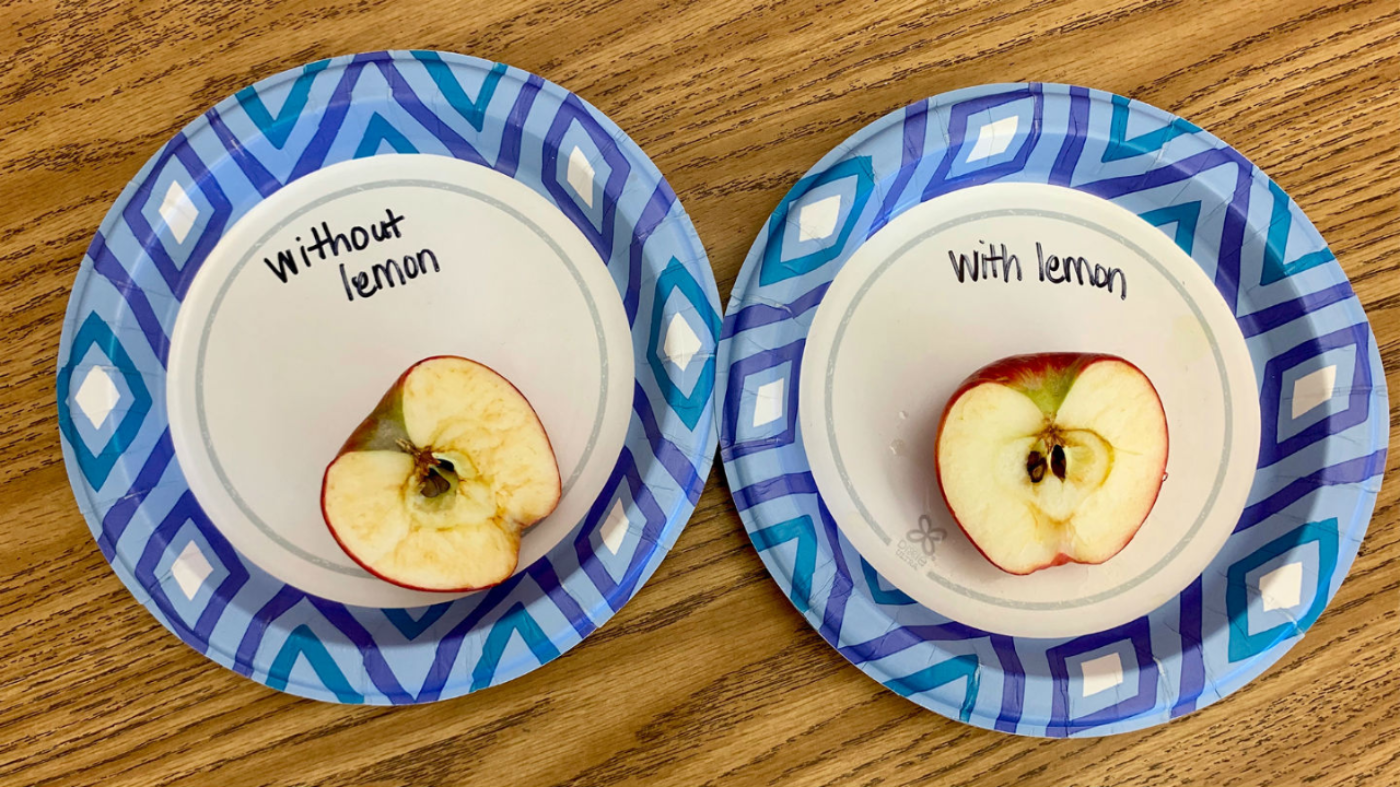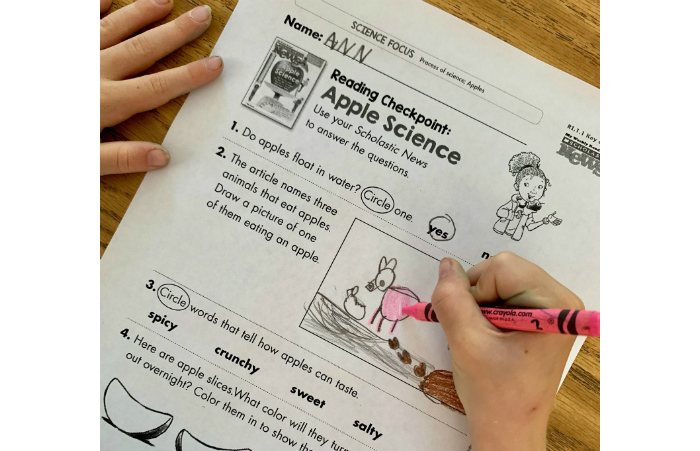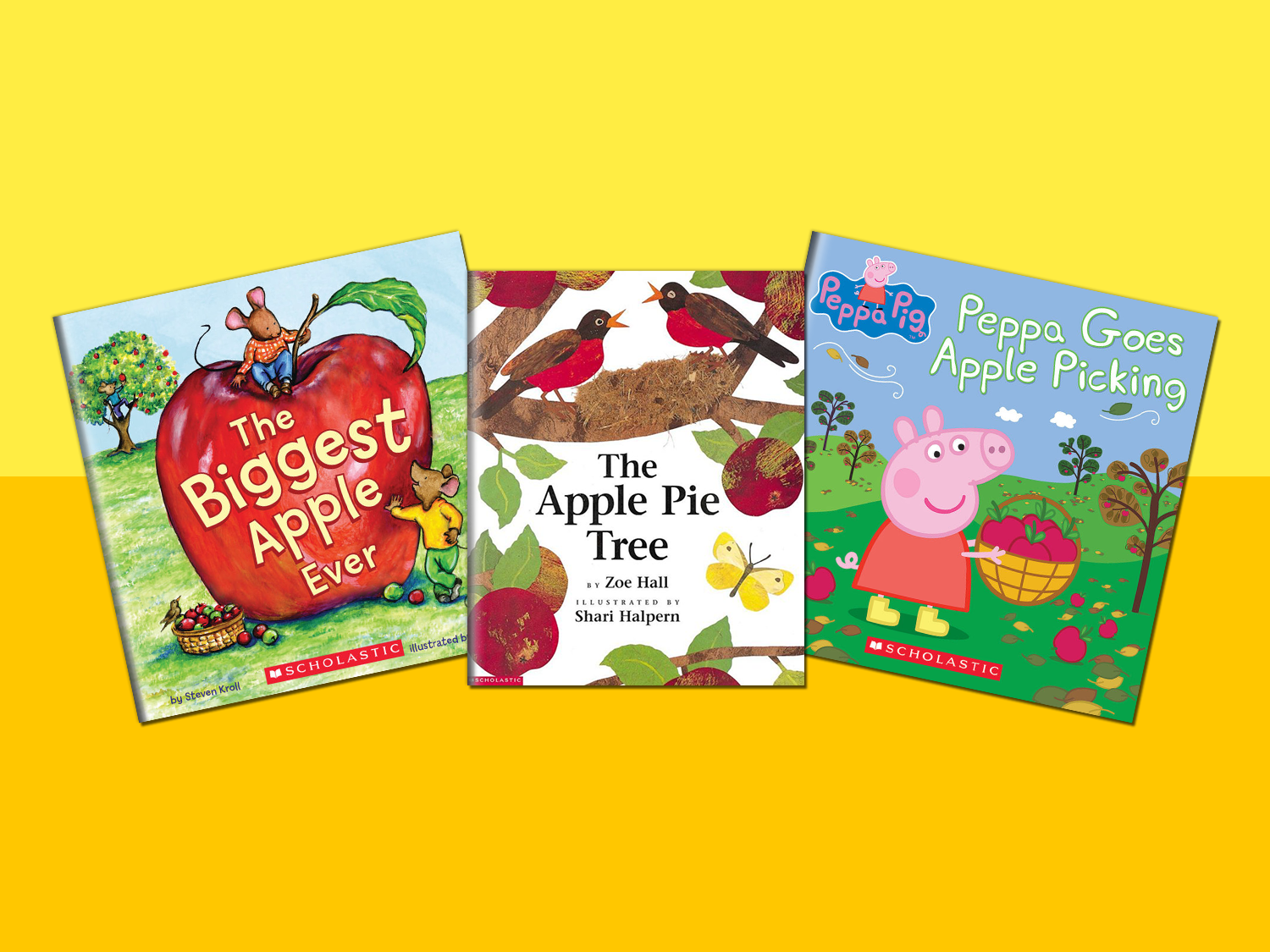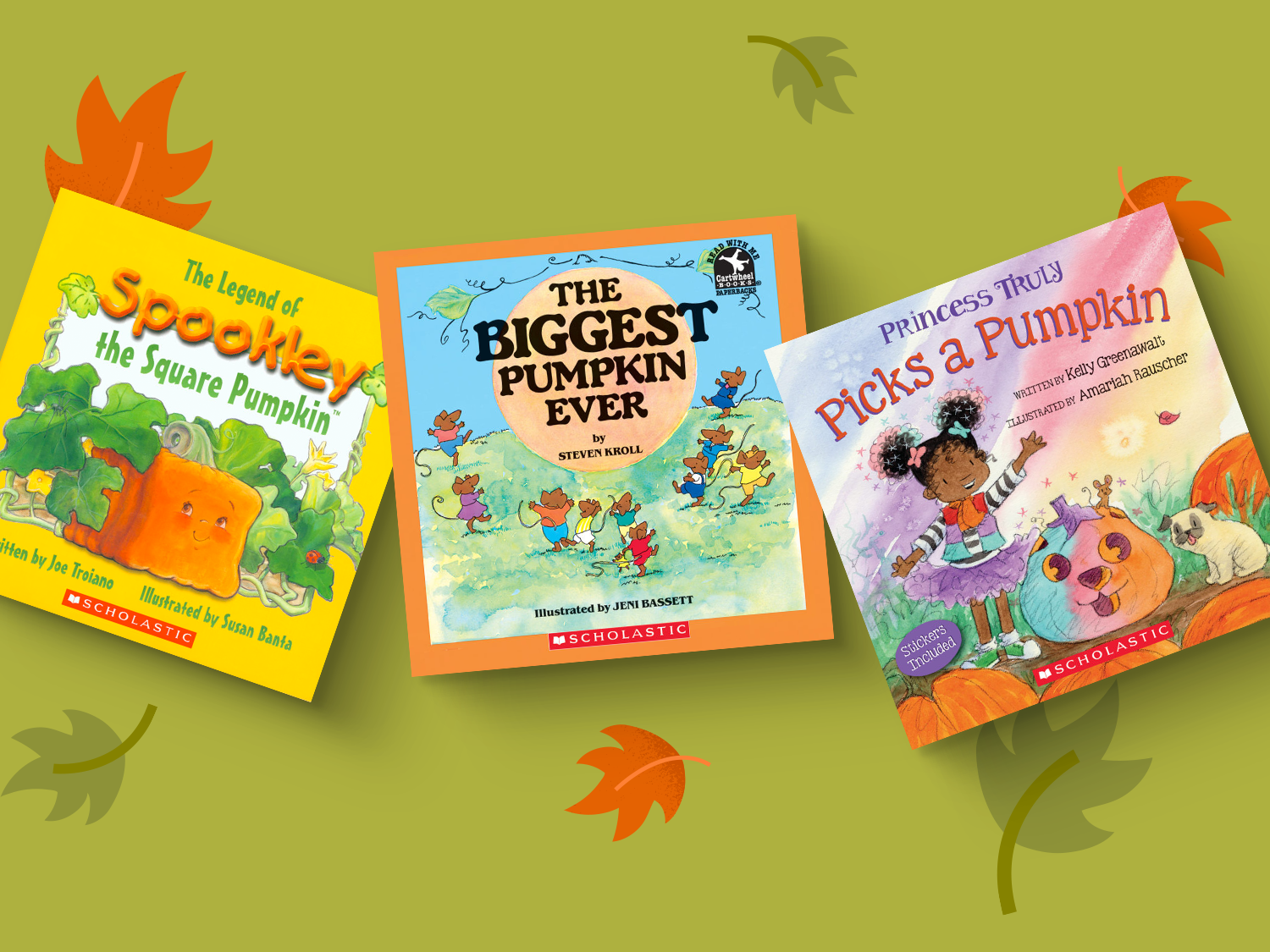Key Takeaways
- Start your lesson with a question that intrigues kids and gets them thinking.
- Then let kids experiment to find out how to keep apples from turning brown.
- Scholastic News for grade 1 has digital resources including activities and ideas to extend each issue.
When you hear the word apple, what do you think of? Back-to-school season, right? Apples are the perfect symbol for this new season with our students!
This month, Scholastic News for grade 1 turns apples into “Apple Science” fun for your first graders!
It inspired a great lesson in my classroom that combined science, reading and writing. I started with the Scholastic News for grade 1 website.
The result? Apple-tastic! Here’s how we did it.
Step 1: Ask questions.
To begin our lesson, I drew a giant apple on the board and asked the students to think of questions they had about apples. It's always interesting to open up a classroom of first graders to questions!
The question "Why do my apples turn brown?" was the perfect kickstart to "Apple Slice Investigation" for the class. Since we know that ideas stick with kids if we give them an opportunity to touch and explore things, I wanted to give them a chance to find out on their own how to keep apples from turning brown.
I posed the question, "Do everyone's apples turn brown in their lunch?" Answers ranged from "No, because my mom doesn't cut my apples up," to "YES, and they are GROSS to eat!" to "Sometimes, just a bit."
I then asked, "Why do you think that some apples turn brown and others don't?" This opened up a very interesting conversation for these budding scientists!
After much discussion, we finally decided that there may be a special ingredient used to keep sliced apples fresh, and we should try to see if we can keep our apples from turning brown. I let the kids in on the secret: lemon juice!
Step 2: Complete the apple science experiment.
I cut apples in half just before we started the experiment so they wouldn't prematurely turn brown. I asked the kids to use their ‘Scientist Eyes’ to observe the apples and draw their predictions of an apple with lemon juice and an apple without lemon juice.
We left the apples overnight. What would happen? The next morning, the kids burst through the door to see what their apples looked like!
After observing for a few minutes, each child filled out an Apple Slice Investigation printable by drawing what the apples looked like after a night. The kids were shocked that a little lemon juice would help preserve the natural color of the apple.
Step 3: Read the Scholastic News for grade 1 “Apple Science” issue and have a dance break!
Now that the students were excited about apples, I projected the digital issue of Scholastic News onto the screen so we could learn even more. The students were excited to see that some of the questions from the previous day were inside the issue.
After reading the issue, we used my absolute favorite new addition to Scholastic News’ digital resources—Dance Break! The short video allows kids to get their wiggles out by moving to music about apples. It was the perfect way to transition from the magazine into the extension activities.
Step 4: Check comprehension and go deeper with printable activity sheets.
To make sure my students understood the material in their magazines, we followed up with the included comprehension activities.
The Reading Checkpoint printable required students to use their issues to answer the questions.
Many of the students remembered the answers from our read-aloud, but some used their own copies of the magazine to find the answer.
I'll be honest—the Deeper Thinking: Apple Science writing worksheet was a challenge for some of my young writers. The students had no trouble answering these higher-level questions, but did have some difficulty writing those answers down! On the upside, it was a great way to sneak in an informal assessment of their writing and spelling.
Then, the Diagram of an Apple was a great activity to review important apple vocabulary (and give the students a chance to just have fun coloring—something we do not have enough time to do these days.)
Step 5: Play the online game.
Of course, no Scholastic News lesson is complete without playing the online game! (Trust me, my students will remind me that we need to play!) This issue's game focuses on the all-important sight words.
After finishing up the game, they begged me to play again!
This issue of Scholastic News for grade 1 turned everyone's favorite fall theme into a bunch of fun learning activities.
If you’re looking for a way to bring fun, hands-on lessons like these into your classroom, try Scholastic News for yourself. Sign up for a FREE 30-day trial and discover how Scholastic News can help you engage students in seasonal lessons all year long.
Molly Lynch is a first-grade teacher in the San Francisco Bay area. She writes the blog LuckytobeinFirst.com.







